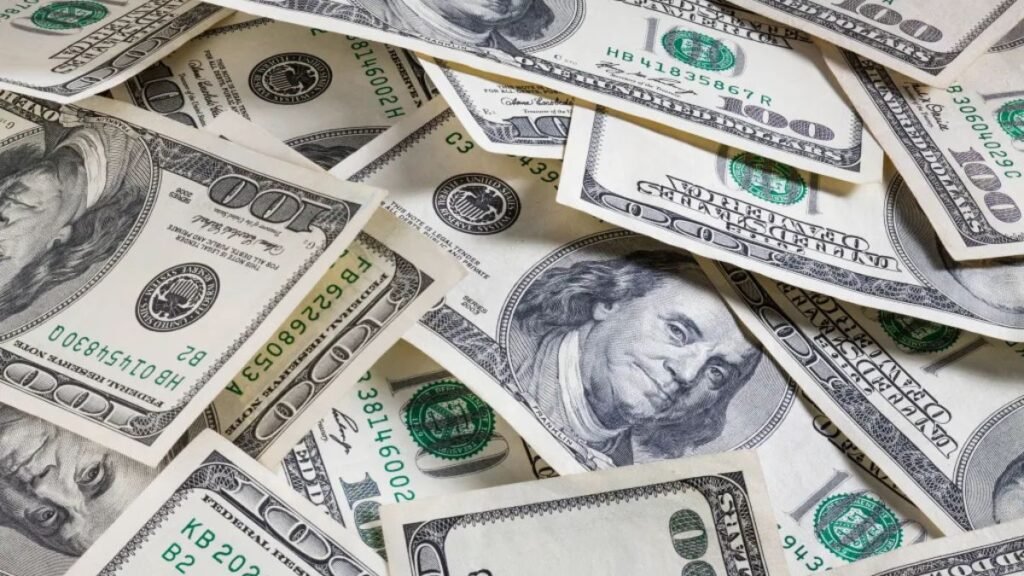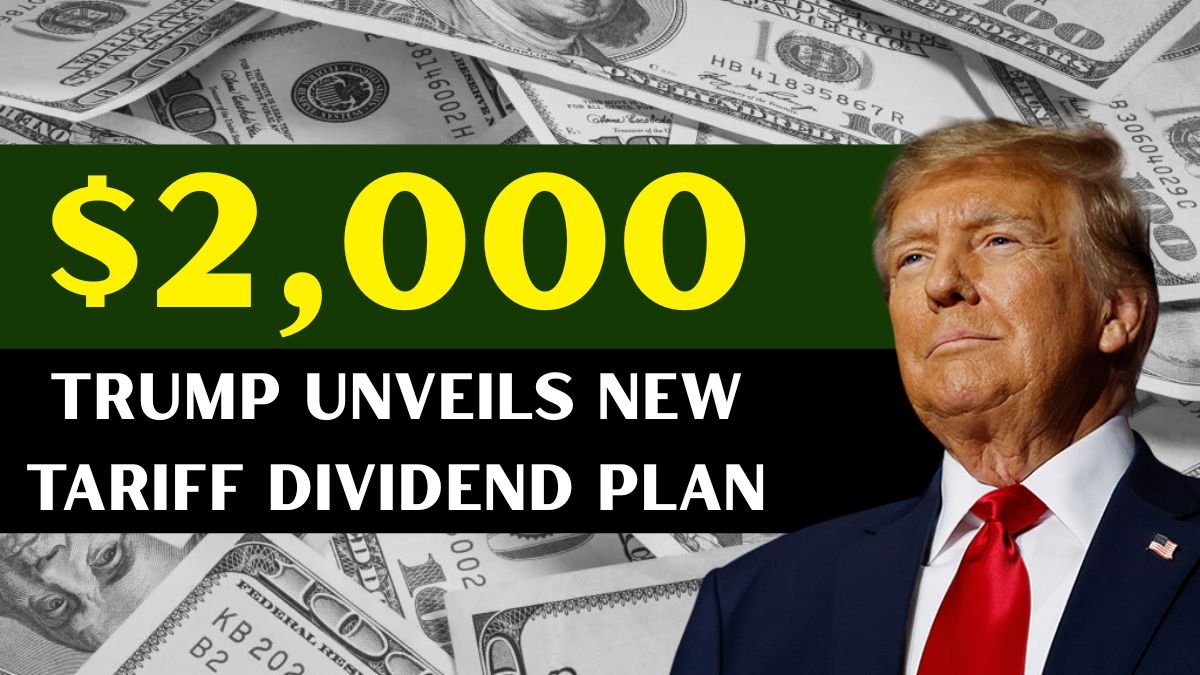American politics often sees statements that generate both excitement and debate among the public, and former President Donald Trump’s recent claim falls into that category. Trump stated that the United States has become so strong and wealthy thanks to his tariff policies that the government can now give every American at least $2,000 as a “tariff dividend.” This amount would be given to everyone, except those with “high incomes.”
This statement immediately sparked discussion across the country. Is this truly the beginning of a new economic relief program, or just a political claim? Does the government have a clear plan for this? Will the payment come directly into bank accounts or as a tax credit? This article provides a simple and detailed analysis of all these questions.
Trump’s Claim: Tariffs Made America the ‘Most Prosperous Nation’
On Sunday, Trump issued a statement in which he attributed America’s economic strength to his tariff policy. He said the country is now among the wealthiest and most respected economies in the world.
His words were:
“Those who oppose tariffs are fools! We are now the richest and most respected country in the world. We have almost no inflation, the stock market is at record levels, and 401k accounts are at all-time highs.”
Immediately afterward, he reiterated his main claim:
“A dividend of at least $2000 will be given to every person (excluding high-income earners).”
This claim has sparked a new wave of hope among low- and middle-income groups across America.
What Is a Tariff Policy and Where Will the Money Come From?

Tariffs, in simple terms, are import duties imposed by the government. When a higher tax is placed on a foreign product, the government receives revenue from it.
Trump’s argument is that:
- Tariffs increased government revenue.
- Domestic companies benefited.
- America became economically stronger.
- Therefore, the government can now give this “dividend” back to the public.
However, many economists believe that the effects of tariffs are not always positive. This leads to:
- Goods are becoming more expensive.
- Trade relations being affected
- Increased consumer spending
Therefore, Trump’s claim that the country has become “extremely prosperous” is still a subject of debate among experts.
Treasury Secretary’s Statement: Lack of Clarity within the Government on the Plan
When Treasury Secretary Scott Bessent was asked on ABC News’ “This Week” show whether the $2,000 dividend announced by Trump would actually materialize, he clearly stated that:
He hadn’t even discussed it with Trump yet.
This is significant because the fact that the government’s chief financial officer is unaware of such a major economic announcement indicates that the plan is still in its very early stages.
When asked how the payment would be received, he said,
“It could take many forms. Such as tax relief—eliminating taxes on tips, eliminating taxes on overtime, removing taxes on Social Security, making car loans tax-deductible—all these steps would put money directly into people’s pockets.”
This makes it clear that the $2,000 amount could be a direct check, or it could provide benefits gradually in the form of tax breaks.
Will it be a direct $2,000 payment?
Most people are hoping that it will be checks sent directly to bank accounts, similar to the COVID stimulus payments. But the indications so far suggest that:
- A direct check payment is less likely.
- Providing it as tax relief would be easier and quicker.
- It could be a combined effect of several smaller benefits.
That is, it could be a kind of “financial package” where the total benefit from various tax breaks amounts to approximately $2,000.
Why are ‘high-income’ individuals excluded?
A crucial part of Trump’s statement is that this dividend will not go to high-income Americans. This is because:
- To ensure relief reaches those who need it most
- To keep government spending and the budget under control
- To focus the plan on the middle- and lower-income brackets, who constitute the majority of the population
The definition of high-income is not yet clear, but generally in the US it refers to:
- Those earning above $150,000
- Those in higher tax brackets
- Those with significant investments and assets
These individuals are typically excluded from such programs.
Can this plan be legally implemented?
Implementing any new large-scale financial program requires:
- Congressional approval
- Budget allocation
- Formal policy documents
- State consent (if necessary).
None of these processes appear to have begun yet. Therefore, it’s premature to say that the $2,000 payment will begin anytime soon.
This claim could also be an election strategy.
Many analysts believe this statement could be an election strategy. Announcing economic benefits in an election year attracts voters’ attention.
Trump:
- Has made big economic claims before
- Counts tax cuts and stimulus as his achievements
- Makes economic issues central to his election campaign
Therefore, his critics view it as a political promise, while supporters see it as a potential relief plan.
Potential impact on the lives of ordinary Americans
If this plan is implemented in any form, its impact will be particularly significant for low- and middle-income individuals.
This amount could help with:
- Paying rent
- Utility bills and daily expenses
- Reducing debt
- Children’s education expenses
- Relief from inflation
- Building savings
Many families in America live paycheck-to-paycheck, so a benefit like $2,000 could stabilize their budgets.
Economists’ Reactions
Many experts say:
- Tariffs generate revenue for the government, but they also increase the price of goods.
- The claim that America has become “wealthy” is not entirely accurate.
- The government needs to establish a clear policy for the $2,000 dividend.
- It would be easier to provide it as a tax rebate.
Some experts are calling it a “fiscal gimmick,” while others acknowledge its potential benefits.
Conclusion: Hopes, but no concrete plan yet
Trump’s claim of a $2,000 tariff dividend has raised considerable expectations among Americans. But the reality is:
- No official plan has been announced yet.
- The Treasury Secretary himself is unaware of the details.
- The method of payment is unclear.
- The funding source is not clear.
- Legal procedures haven’t even begun.
Currently, it’s a political declaration that may or may not become policy in the future.
FAQs
Q. What is Trump’s proposed $2,000 tariff dividend?
A. It is a suggested payment of at least $2,000 per person funded through tariff revenue, according to Trump.
Q. Who would receive the $2,000 dividend?
A. All Americans except high-income individuals, based on Trump’s statement.
Q. Is this payment officially approved?
A. No. The government has not released any official plan or policy confirming these payments.
Q. Will the dividend come as direct cash?
A. It may come as direct payments or tax benefits, but no confirmed method has been announced.
Q. When will the payments start?
A. There is no announced date because the proposal is not yet a formal government program.


